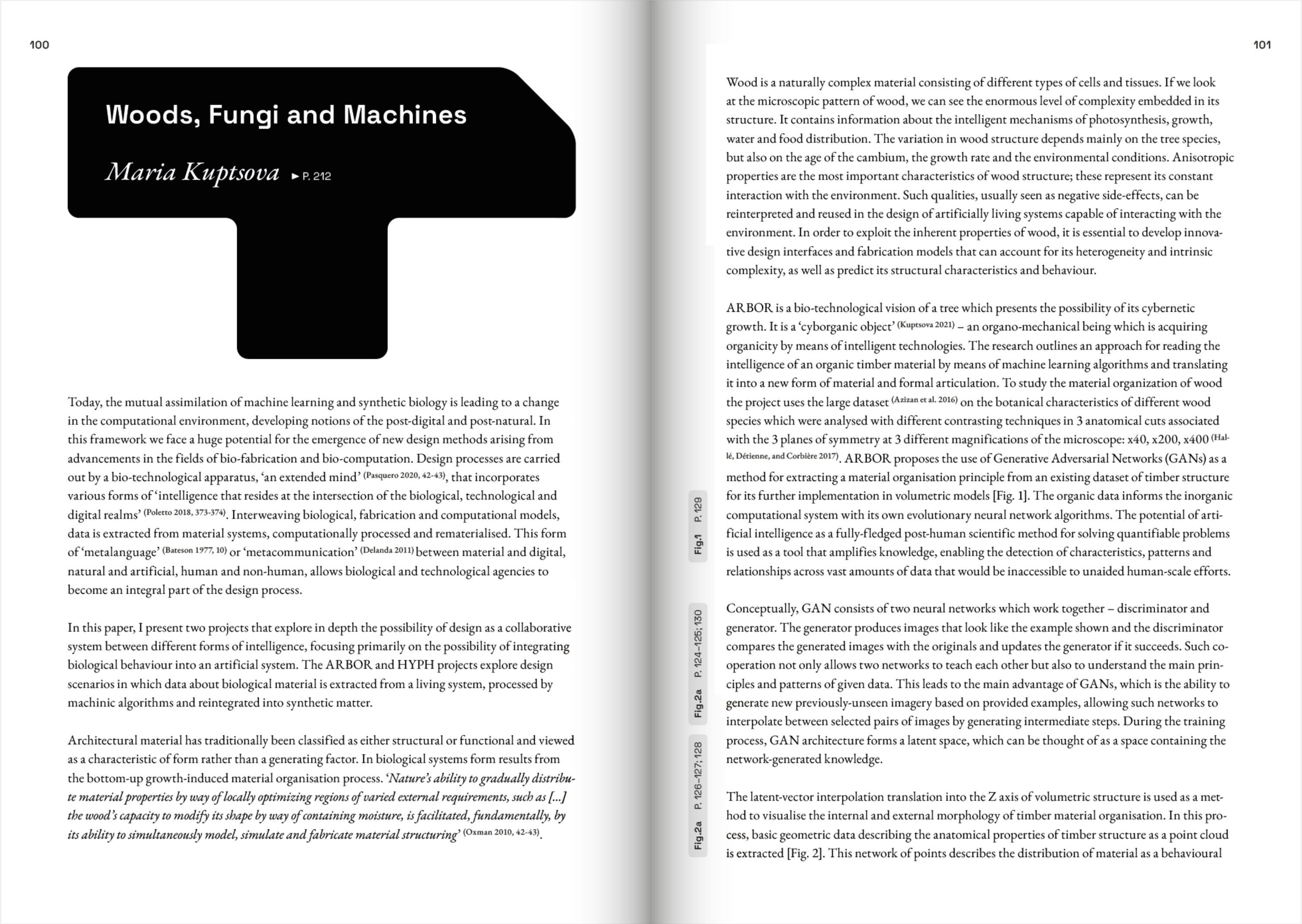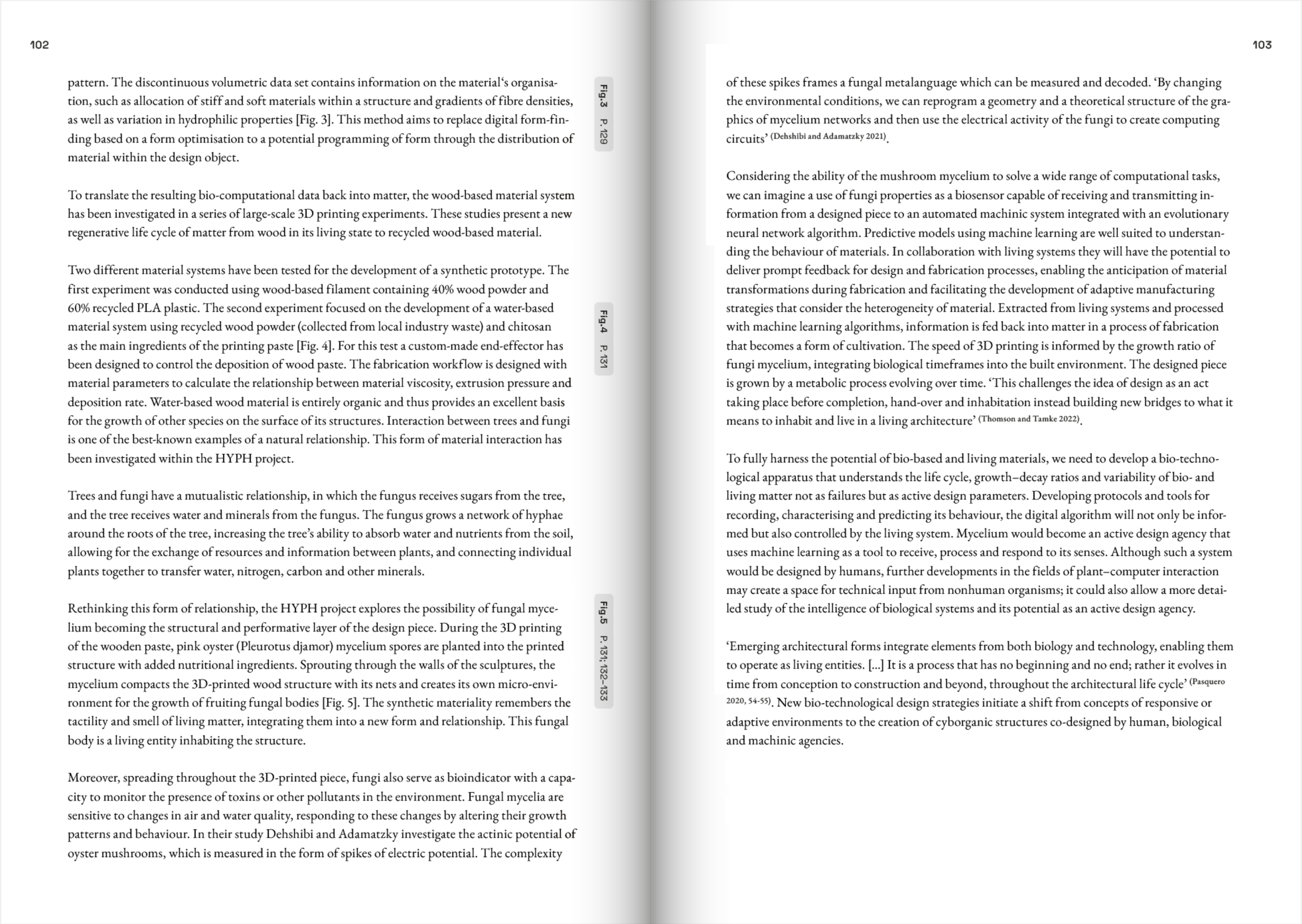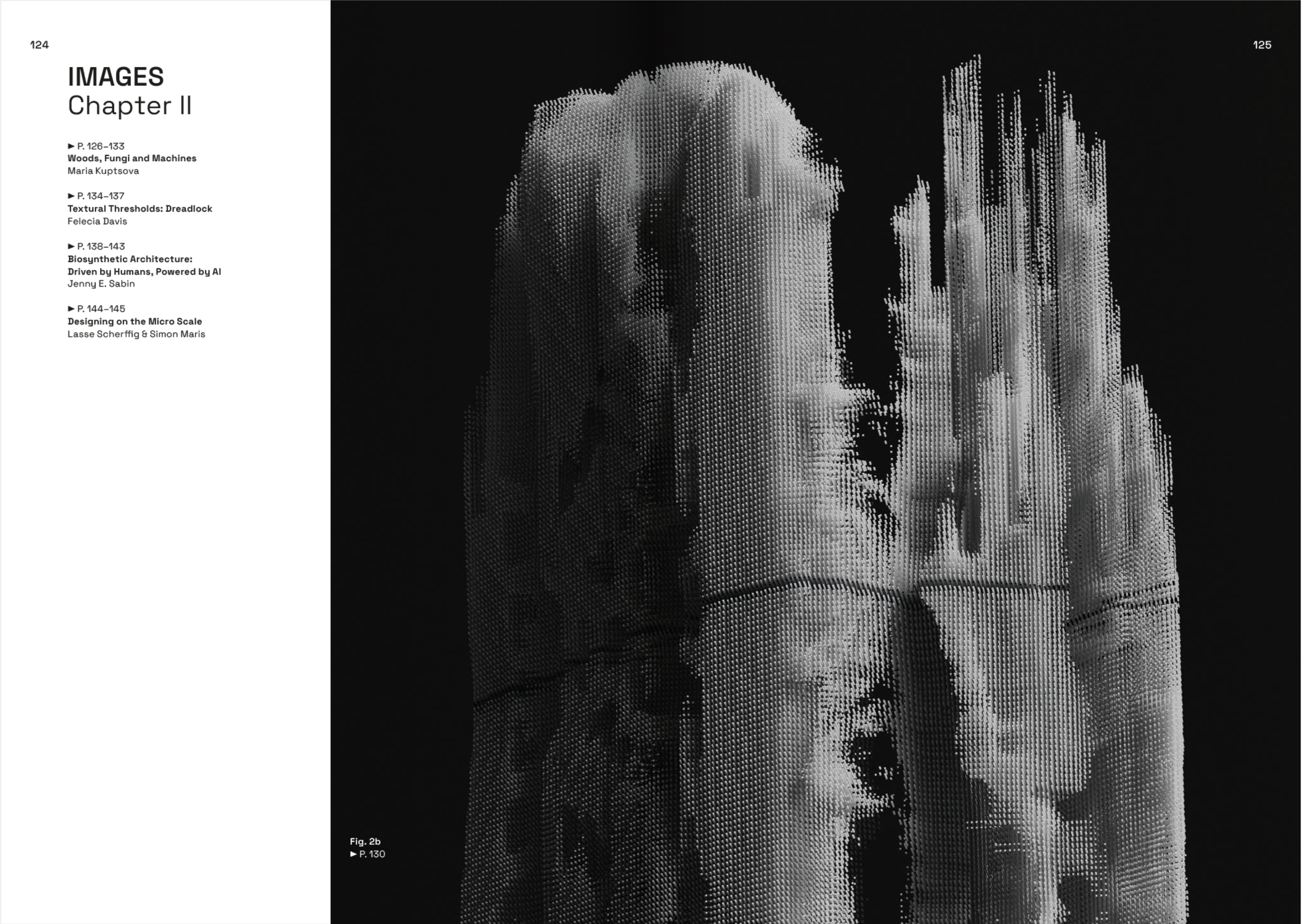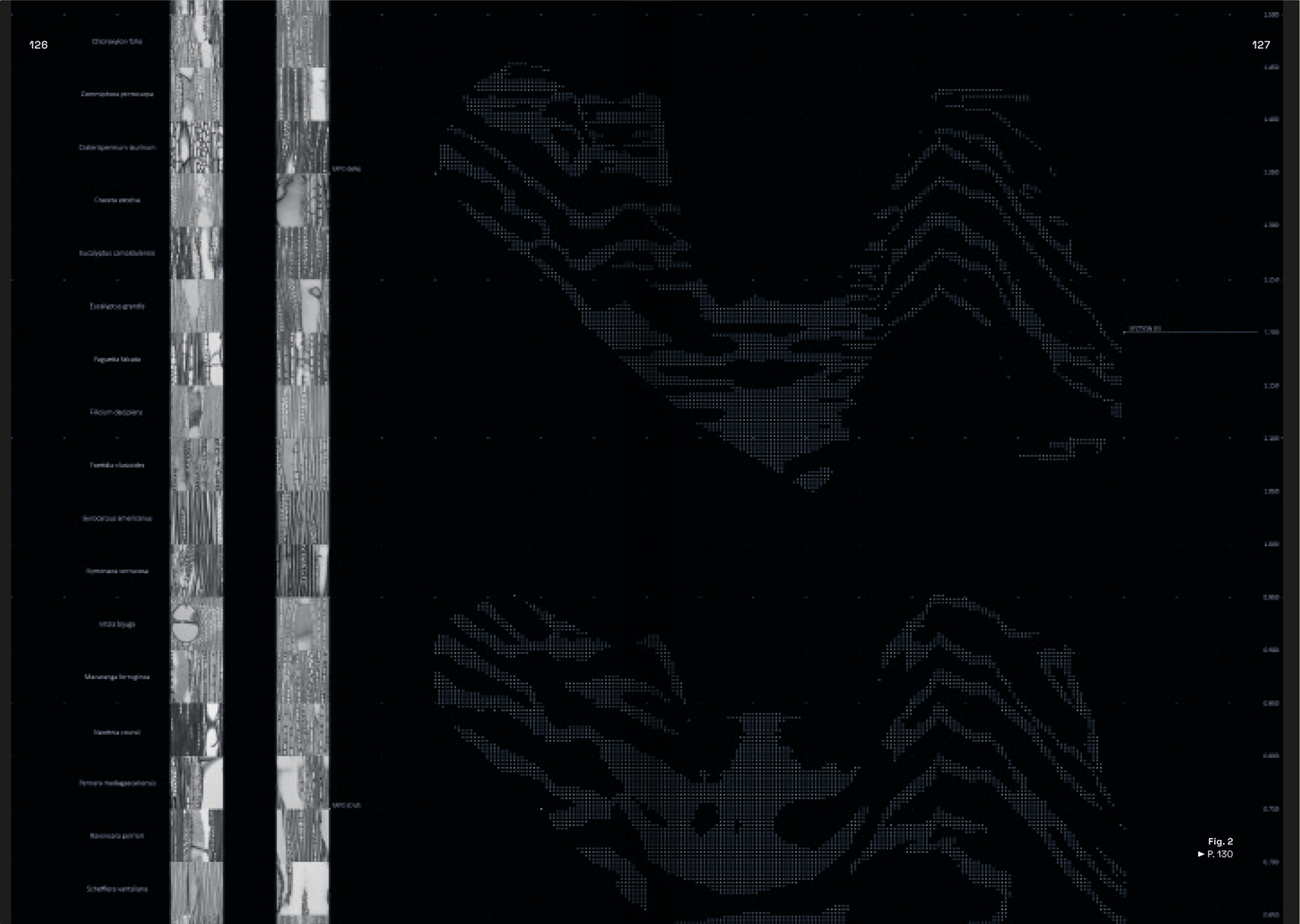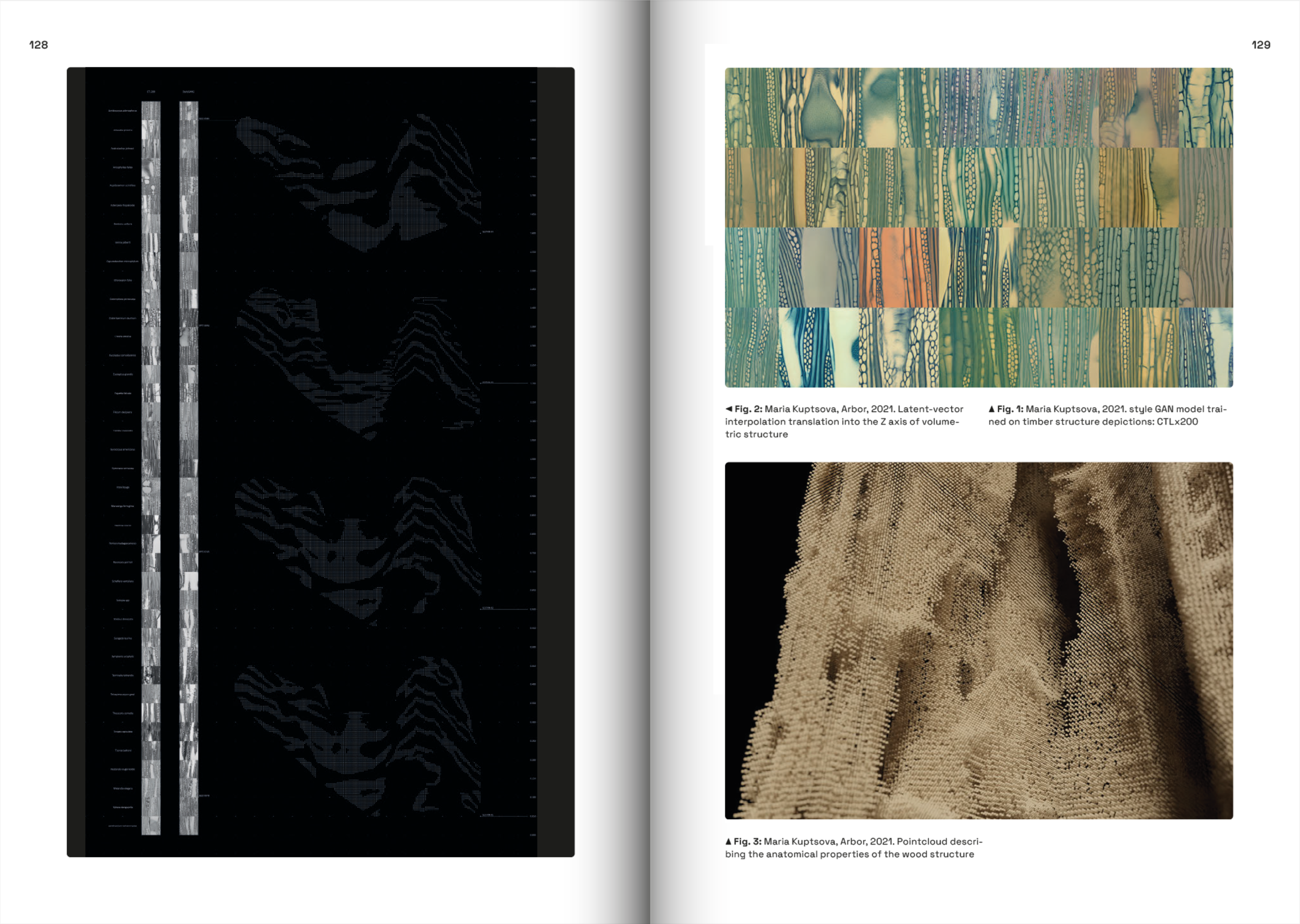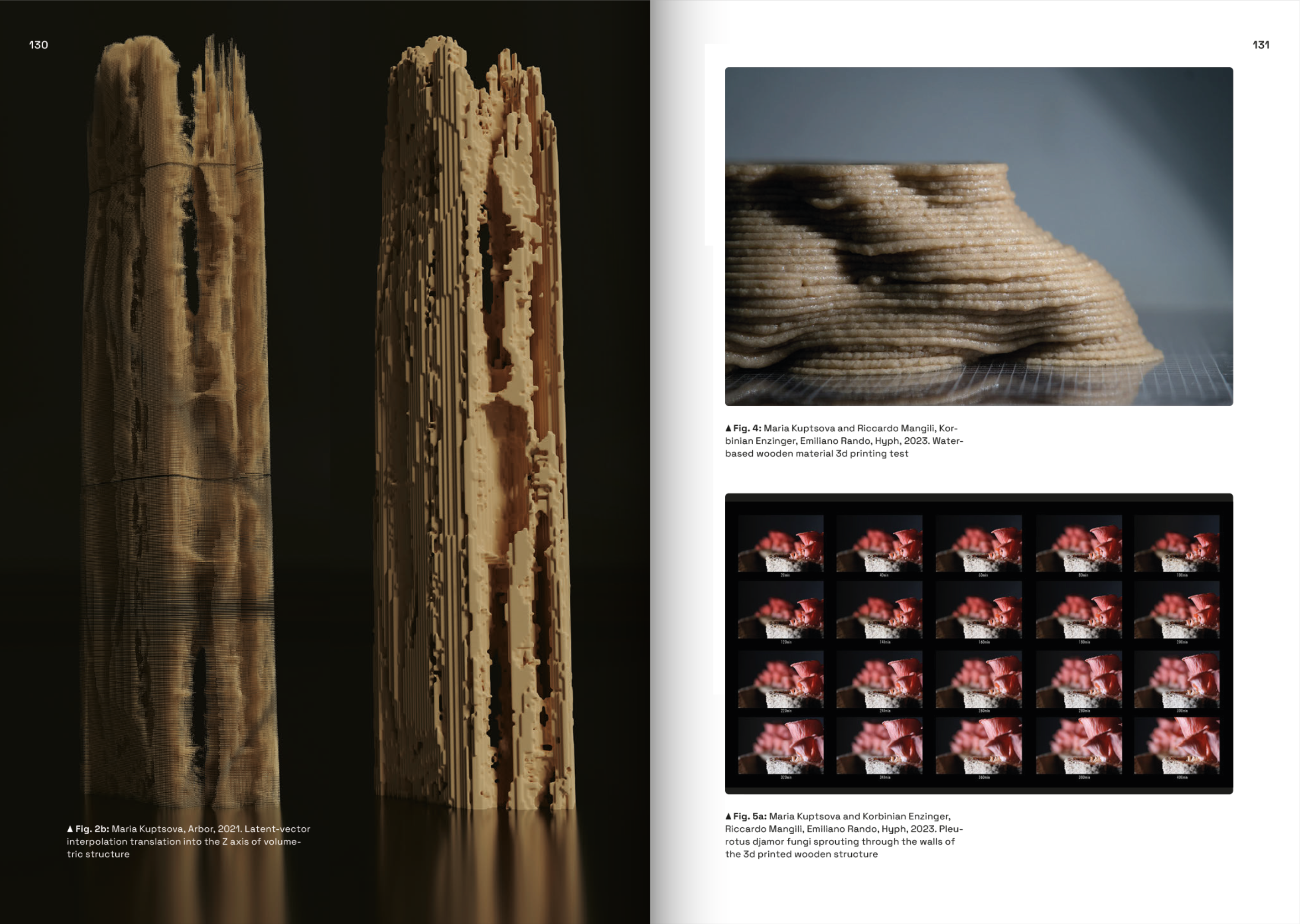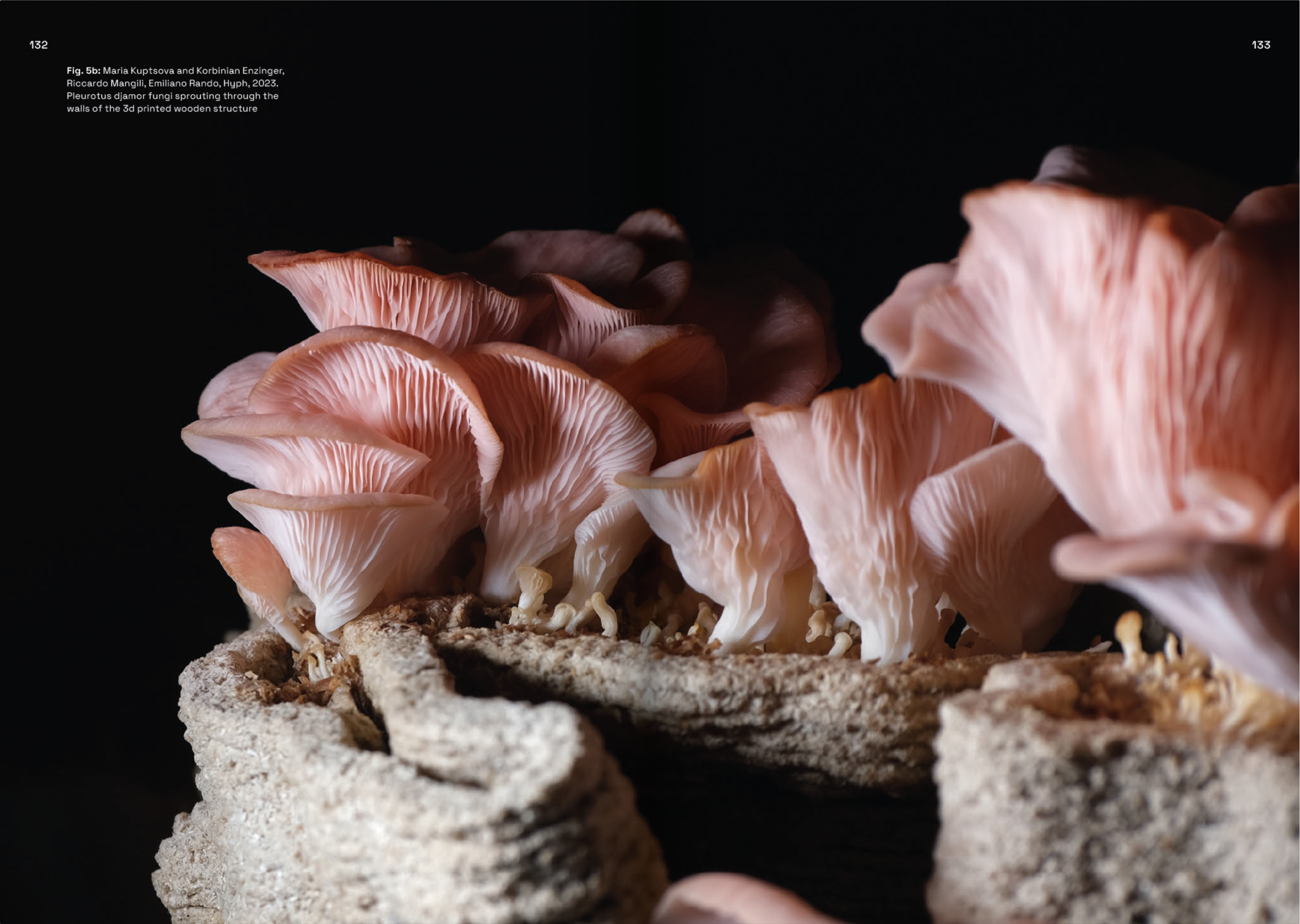Maria Kuptsova
Woods, Fungi and Machines. Synthetic realities, New Frontiers in AI-driven Design, Fabrication and Materiality, edited by Manuel Kretzer
09.11.2023Today, the assimilation of machine learning and synthetic biology is leading to a change in the computational environment, developing notions of the post-digital and post-natural. In this framework we face a huge potential for the emergence of new design methods arising from the advancements in fields of bio-fabrication and bio-computation. Design processes are carried out by a bio-technological apparatus, an extended cognitive structure, that incorporates variousforms of ‘intelligence that resides at the intersection of the biological, technological and digital realms’. (Poletto 2018, 373-374). Interveawing biological, fabrication and computational models, data is extracted from material systems, computationally processed and materialised back into matter. This form of a ‘metalanguage’ (Bateson1977) or ‘metacommunication’ (Delanda 2011) between material and digital, natural and artificial, human and non-human, allows biological and technological agencies to become an integral part of the design process.
In this paper, I present two projects that explore in depth the possibility of design as a collaborative system between different forms of intelligence, focusing primarily on the possibility of integrating biological behaviour into an artificial system. The Arbor and Hyph projects explore design scenarios in which data about biological material is extracted from a living system, processed by machinic algorithmsand reintegrated into synthetic matter.
Author: Maria Kuptsova
ISBN: 978-3-88778-108-8
Accessible at: https://aadr.info/product/synthetic-realities/
